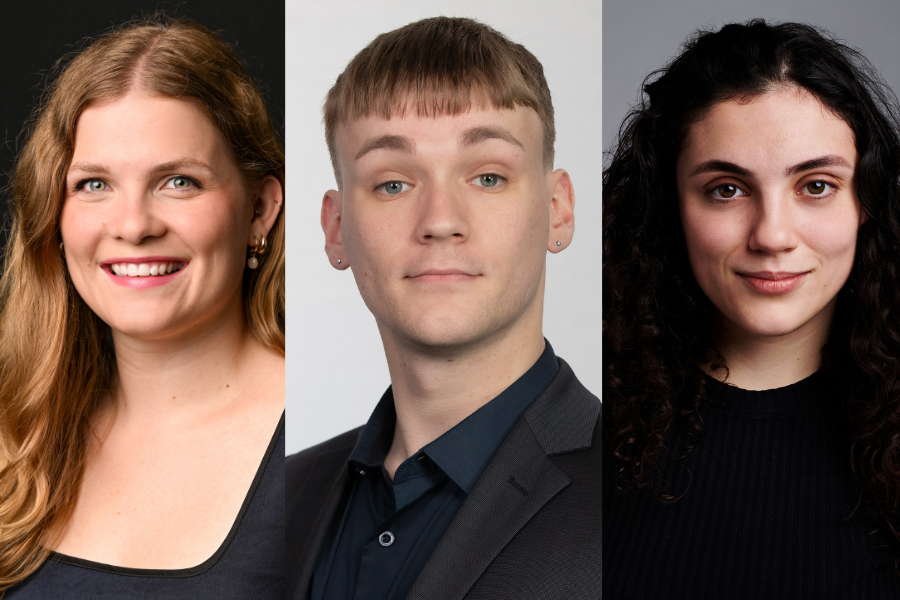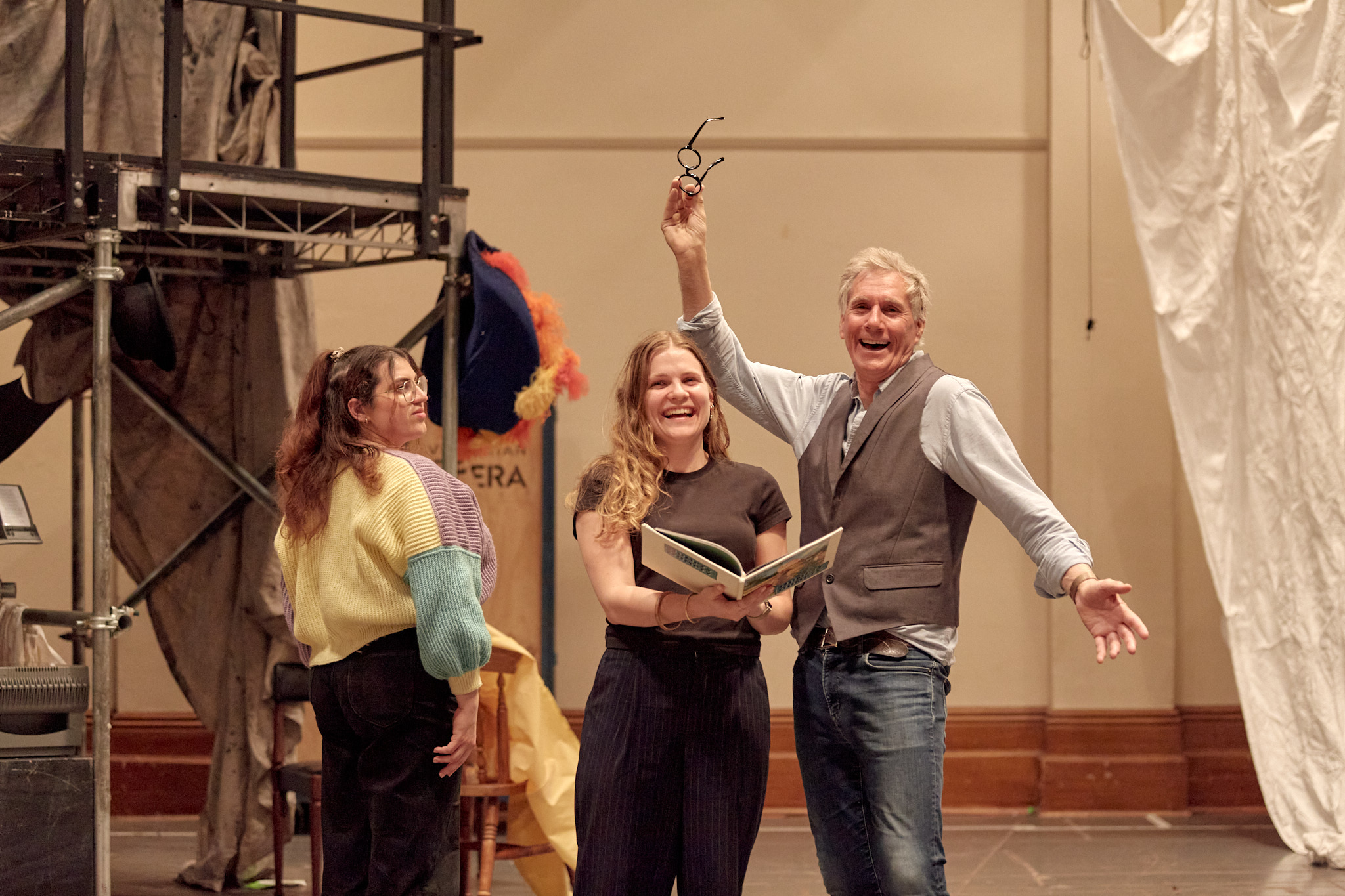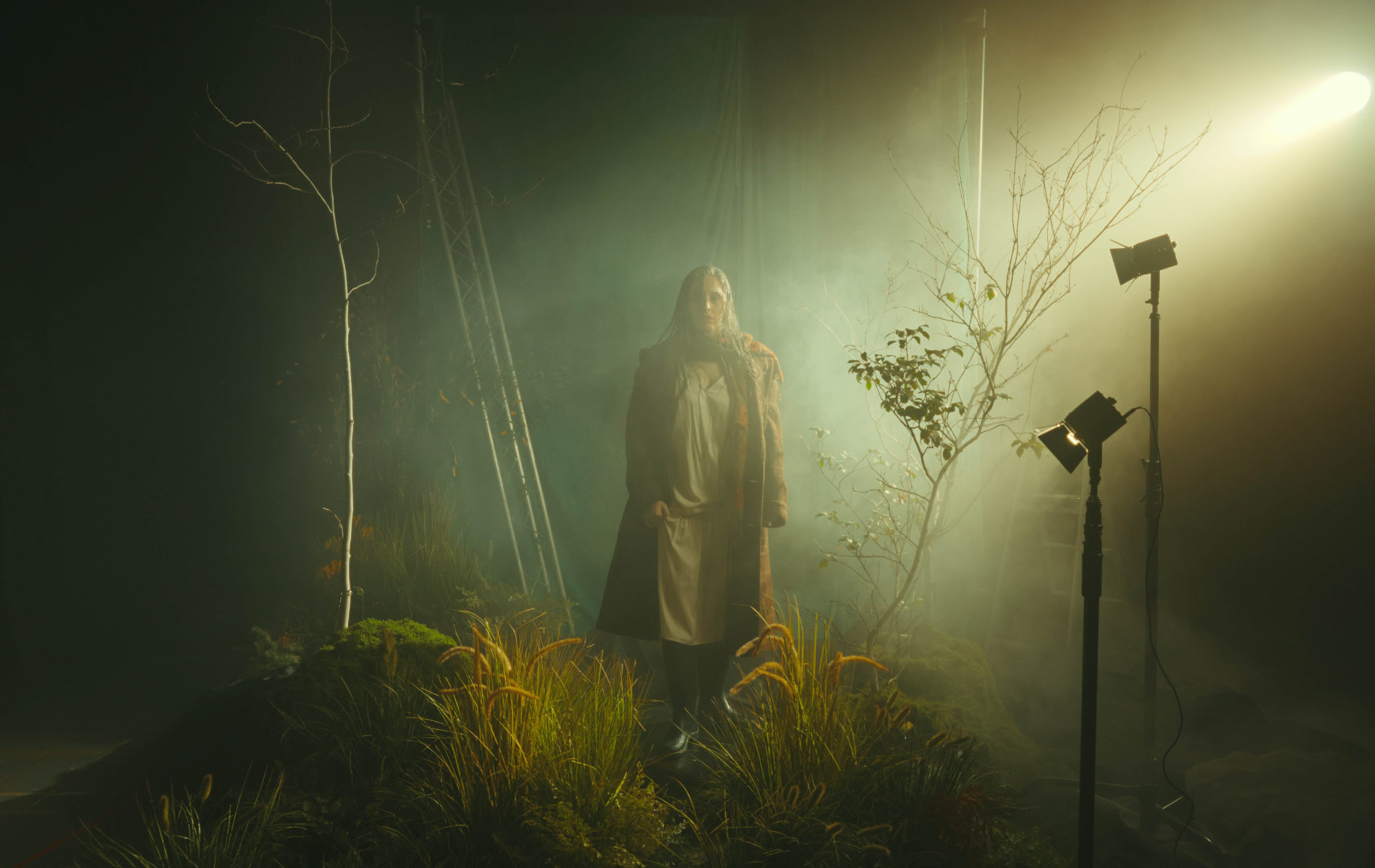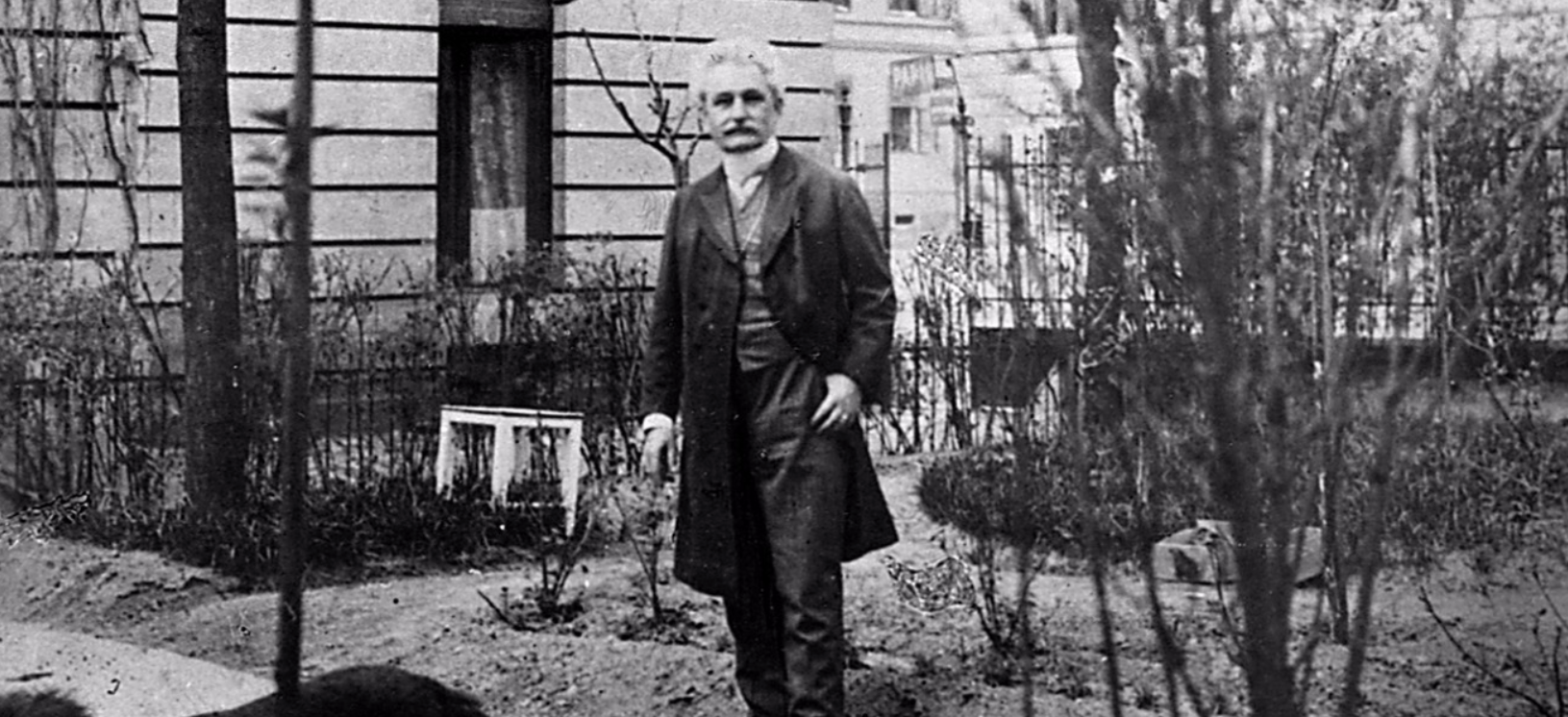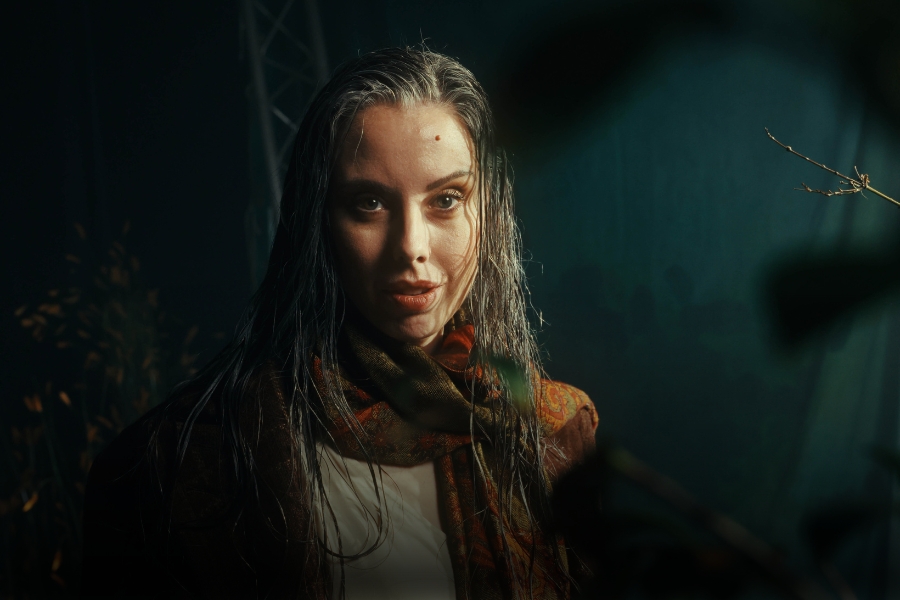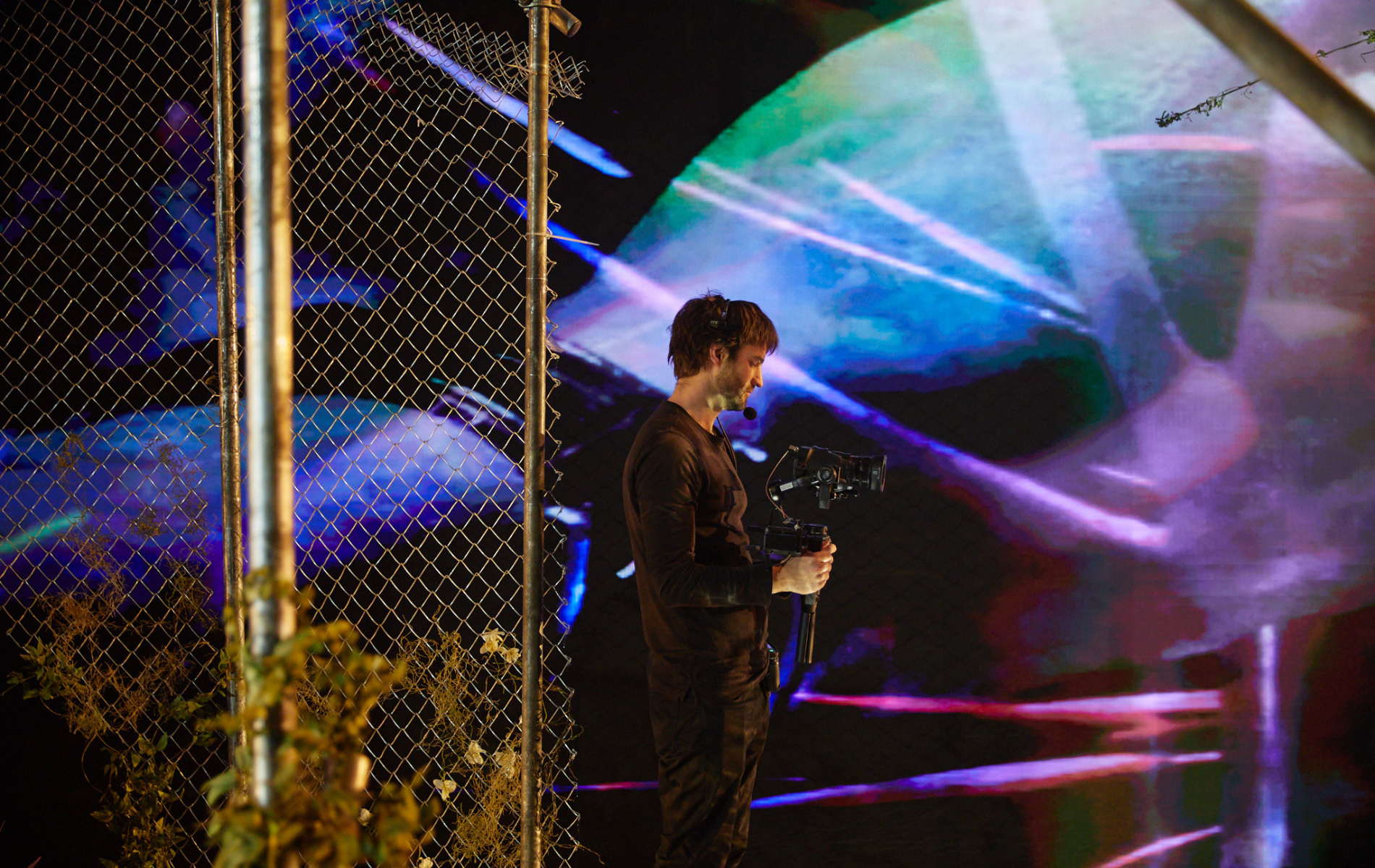
From Katya to Dorian Gray: Meet Katya Kabanova’s live camera operator
Ben Sheen was the Assistant Director and Camera Operator for Victorian Opera’s hit production of Katya Kabanova. Here, he describes the process of melding theatre and cinema.
Ben Sheen was the secret star of Leoš Janáček’s Katya Kabanova. His near-constant presence on stage was subtle, but crucial.
Ben, wielding a film camera, trailed performers while navigating an obstacle course of props, set pieces and chorus members. His live-captured filming was projected onto screens that backdropped the stage.
The effect transformed the Palais Theatre into the grand cinema of its past, seamlessly blending live video with live theatre.
“I knew coming into the show that the set design had a lot of trip hazards, and I was ready for that. Though I still did trip ten times in the show, probably more,” Ben says, laughing. “I think you have to keep focus on what’s coming next and keep moving through.”
Ben’s live projection, alongside video design work from Robert Brown, meant the audience could see the world through Katya’s eyes: details of longing gazes, snarling smiles and clenched crucifixes all framed and projected by Ben’s filmic eye. It brought the psychological disintegration of Katya, the opera’s heroine, into stark relief as she grappled with her desire and her sense of moral duty.
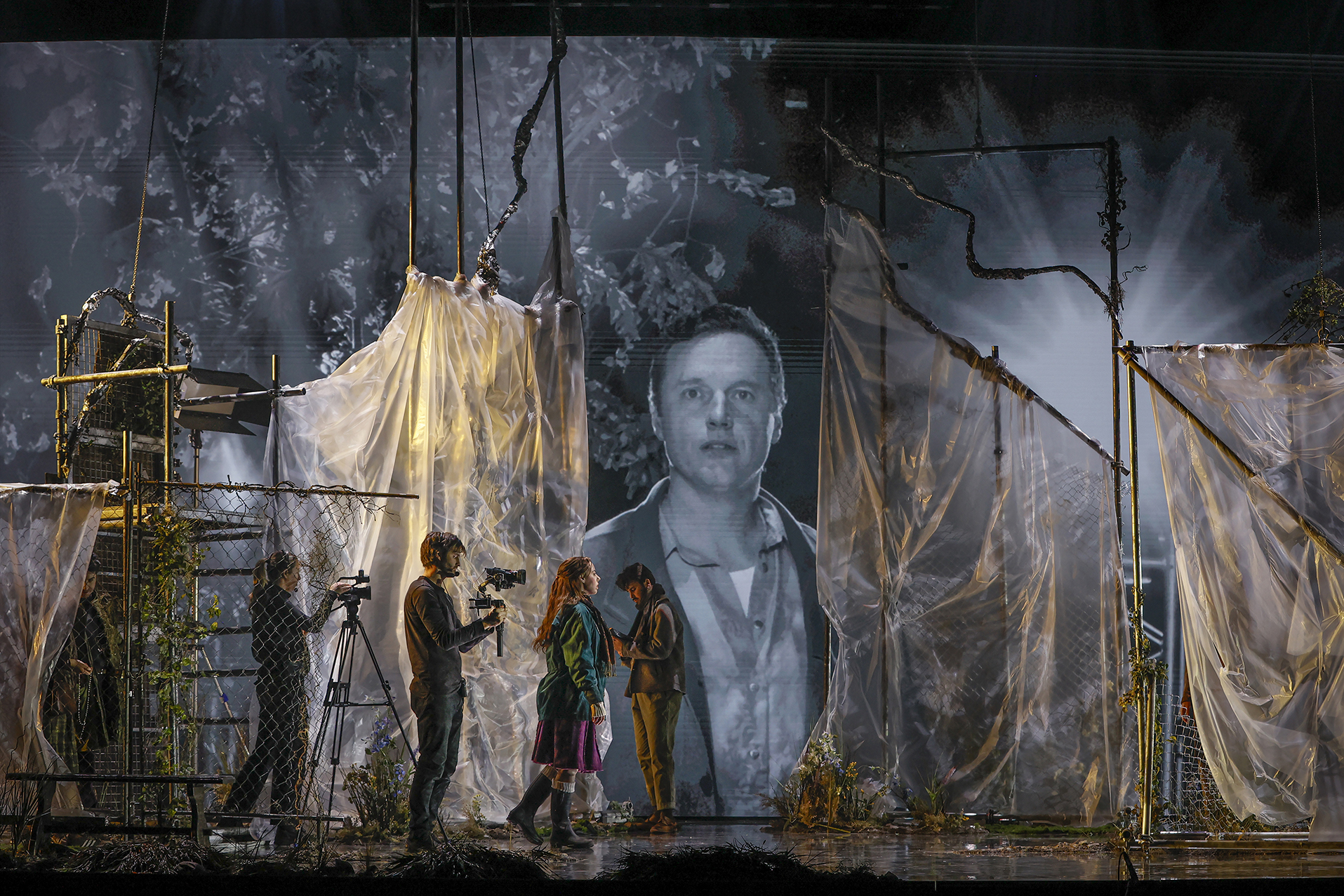
Prior to Katya Kabanova, Ben was the camera operator for the Tony Award-winning production of The Picture of Dorian Gray, along with the rest of Kip Williams’ acclaimed trilogy: The Strange Case of Doctor Jekyll and Mr Hyde and Dracula.
Ben says that in those productions filming had to be extremely precise, almost to the millimetre. Katya Kabanova, on the other hand, was a lot more fluid.
“Heather Fairbairn [Director] let me run free and draw from my experience. I was ultimately able to see what the actors were bringing and find my way through,” he says.
First, Heather and Ben had one-on-one interviews with the principle cast members to detail their unique idea before rehearsals began.
“I was like, ‘I’m Ben, I’m the guy with the camera and I’m going to get right up in your face. Just ignore me and pretend I’m not there.”
Ben says his camera work wasn’t really acknowledged by the cast for the first couple of weeks of rehearsals. This gave him freedom to find any acting or singing quirks that may make for useful footage.
“I found those subconscious, tiny movements they might not know they were doing essential,” Ben says.
“By the third week of rehearsals I was like, ‘oh you know that thing you’re doing with your hands? Just know I’m filming that because it’s really interesting’.”
This, he explains, made for a more authentic experience.
“There were no contrived hand gestures, but instead we amplified the gestures opera singers do anyway that you probably don’t normally see on a big scale.”
During rehearsals the video was projected onto a small TV screen. Blowing it to the cinema-sized screen at the Palais Theatre, however, was something else entirely. Ben had only a few days in theatre to review the framing and learn to navigate the set, before opening night.
“I found certain parts of the screen were hot spots for the audience. The crucifix at the end of the rosary beads, for example. You want to make sure that lands dead-on centre between the set pieces.”
Next, Ben will be heading to London’s West End to return to working the camera in Kip Williams’ Dracula, starring Cynthia Erivo.
Anthea Batsakis, Content Editor
